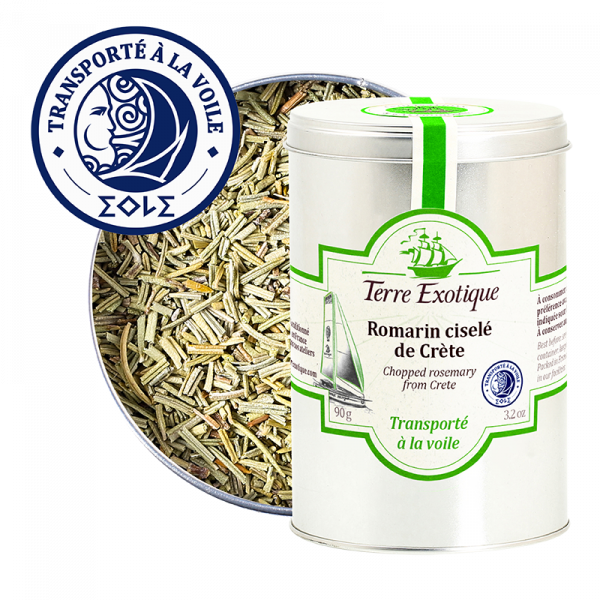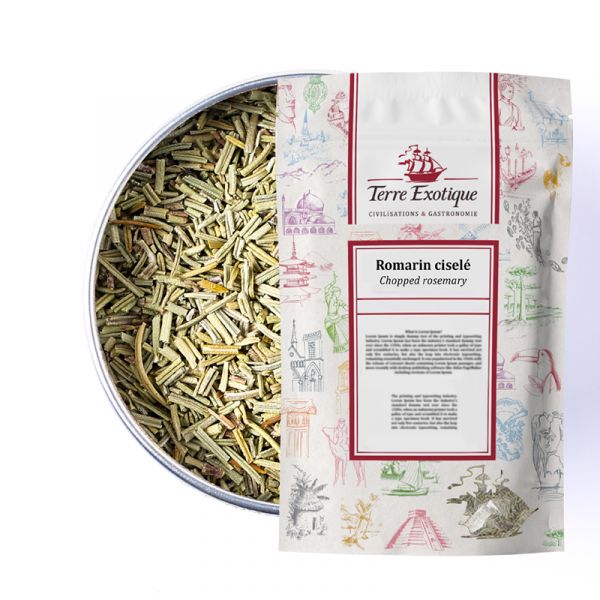Chopped Rosemary from Crete
8.5




Details
Learn more about the Eole program, spice transport by sail
How to cook with Cretan rosemary?
Use it to season meats, poultry, and fish by adding it to marinades or incorporating it into slow-cooked dishes. It also pairs well with roasted vegetables, potatoes, and sauces. As an infusion, it can be used to flavor oils and vinegars, or to add fragrance to soups and broths.
Some recipe ideas for cooking with Cretan rosemary
- - Rosemary focaccia: prepare a homemade focaccia dough, then generously sprinkle it with Cretan rosemary, sea salt, and olive oil before baking it in the oven;
- - Grilled lamb with rosemary: marinate lamb chops with Cretan rosemary, chopped garlic, lemon juice, and olive oil for several hours. Grill them until the meat is golden on the outside and tender on the inside;
- - Roast chicken with rosemary: rub a whole chicken with Cretan rosemary, crushed garlic, lemon zest, and olive oil. Let it marinate for a few hours to intensify the flavors, then slowly roast it in the oven;
- - Rosemary-infused olive oil: gently heat olive oil with sprigs of Cretan rosemary. Let it infuse until it cools, then strain the oil. Use it to drizzle over salads, roasted vegetables, or grilled meats.
The aromas of rosemary
Cretan rosemary offers an intense, resinous aroma with slightly minty and floral notes. On the palate, it delivers a robust, slightly bitter flavor that deepens during cooking.
Botanical insights about Cretan rosemary
Cretan rosemary, or Rosmarinus officinalis, is an aromatic plant typical of Mediterranean regions, growing abundantly on the
More Information
| Allergen | Absence |
|---|---|
| Genus and botanical species | Rosmarinus officinalis |
| Ingredients | rosemary |
| Nutritional Info | VN Energie pour 100 g (energy for 100g) : 1350 kJ / 328 kcal VN Matière grasse (fat) : 15.2 Dont acide gras saturés (of which saturated fat) : 7.37 g VN Glucides (carbohydrate) : 21.5 g Dont sucres (of which sugars) : 21.5 g VN Protéines (protein) : 4.9 g Vn Sel (salt) : 0.13 g |
| TRACES EVENTUELLES D'ALLERGÈNES | céleri, sésame, moutarde, fruits à coques. |
 Français
Français 